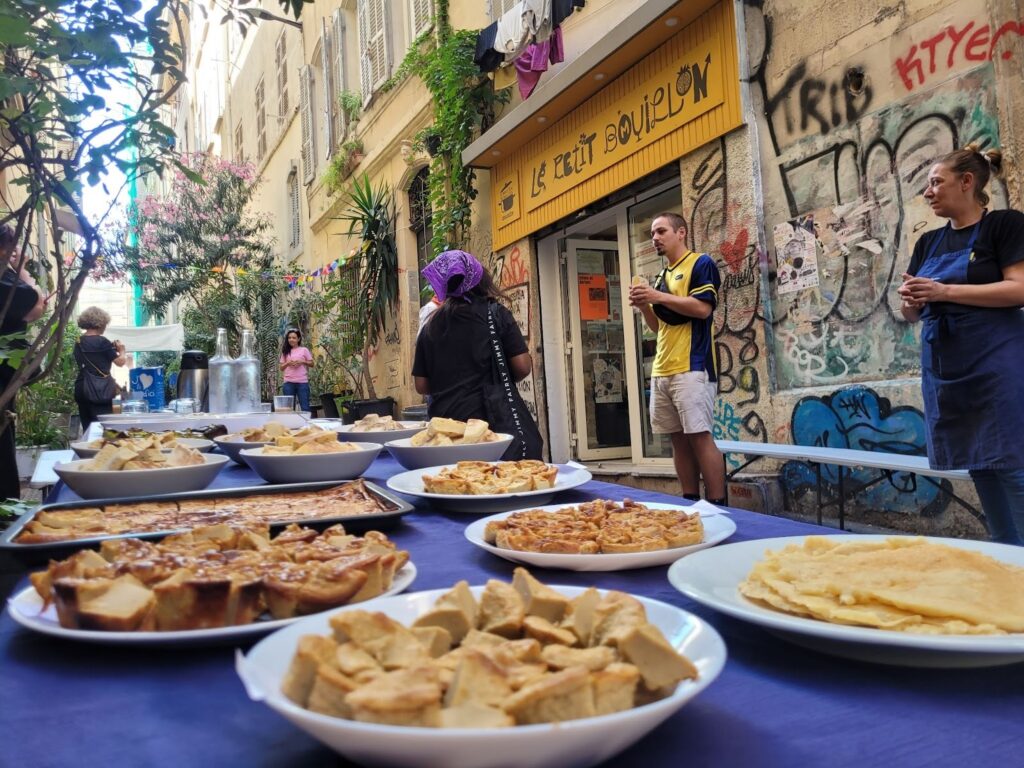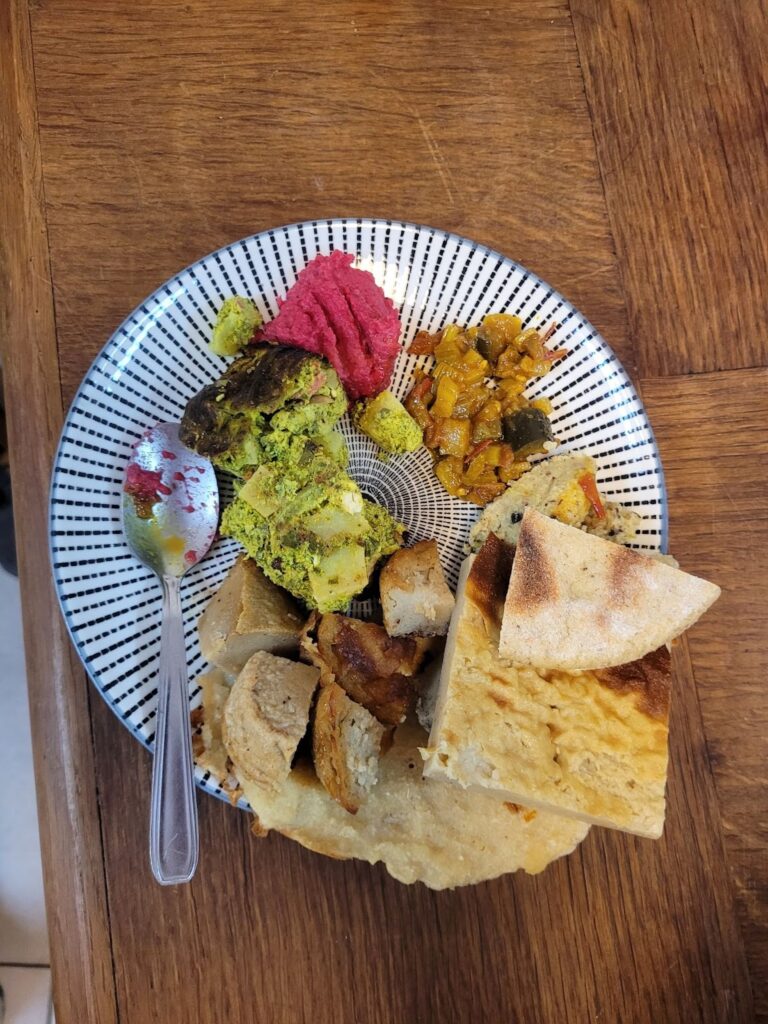A look back at two very rich days in the heart of summer in Marseille, in the vibrant Noailles district.
We (Carole Sadaka, Ahlem Ammar and Nicolas Carton) explored culinary experiences based on legumes in the kitchen of Le Petit Bouillon, the lovely base of a neighbourhood association.
Our objectives: to experiment with innovative recipes that can diversify the use of pulses and to devise practical workshops to encourage their consumption!
Why? Because pulses are excellent for your health: rich in protein and soluble and insoluble fiber, they offer benefits that are often underestimated. For farmers, they preserve soil health and require few resources to grow.
Spoiler alert: we eat far too few of them!

We felt that chickpea and lentil flours were underused, even though they have great potential.
We twisted some recipes by including pulses where they are not usually found, or by diversifying with lentil flour where the traditional recipe calls for chickpea flour.
For those who are curious, we detail some of our results below. The potential of chickpea and lentil flour has been confirmed!
We worked on calentica, a savory chickpea flour flan that is very popular in Algeria and northeastern Morocco. We tested it by replacing half of the flour with lentil flour: it was great! Our slightly experimental “dessert” version, with orange blossom, was also very popular. However, the version with toasted chickpea flour was not a success, we were surprised how much of an impact toasting the flour had on the texture and taste!

Another result: up to 30% chickpea flour can be included in breads such as pita or matlouh. A little more water needs to be added because pulses absorb more water than regular wheat flour, and you may need to reduce the salt a little. Delicious!
We served all this with savory and sweet spreads. The savory spread combining cowpea (also known as black-eyed pea) with fennel was very popular, as were the sweet spreads (one with fava beans and one with cowpea). In one of the sweet spreads, we highlighted carob as a local alternative to cocoa. Carob powder looks a bit like cocoa, but it comes from a drought-resistant Mediterranean tree. Another plant from the legume family that deserves closer attention!


The locals had the opportunity to taste these recipes and gave our initiative a very positive reception. We had the best testers in Marseille! A big thank you to the association “Le Bouillon de Noailles” for hosting us!




